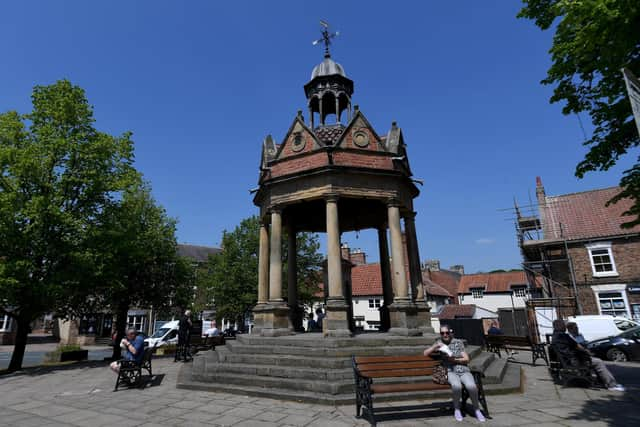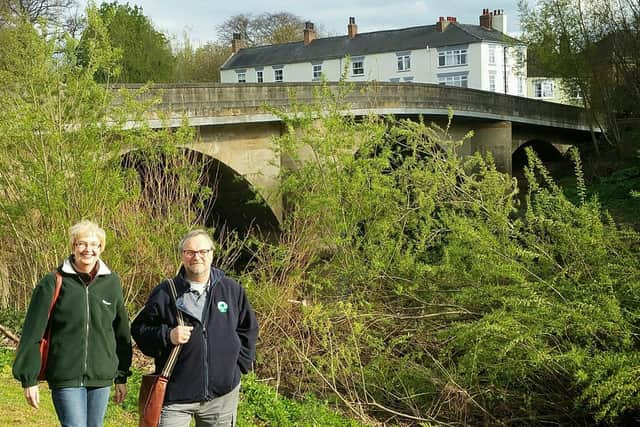North Yorkshire walking trail unveiled 700 years on from the Battle of Boroughbridge
Activities to mark the milestone anniversary of the battle on March 16, 1322, will culminate with the unveiling of a new information board on Saturday.
It will be one of numerous put up in the area to feature medieval-style artwork designed by the Yorkshire regional chairman of the Battlefields Trust, Chris Rock.
Advertisement
Hide AdAdvertisement
Hide AdThe 3 Swords Historical Group will put on an ‘Arming the Knight’ demonstration at Hall Square in Boroughbridge at 10am before a parade to St James Square, where one of the new information boards is due to be unveiled by the Mayor of Boroughbridge, Sean Hynes, at 11am.
Commemorations for the 700th anniversary started in March when Viscount Hereford, an ancestor of Humphrey de Bohun, who was killed in fighting across the original bridge over the River Ure, placed a wreath at the Battle Cross in Aldborough.
Louise Whittaker, from Harrogate, a member of the Battlefields Trust, is to carry out a short tour of the trail and introduce a new leafleted guide of the walk, which will be available at the Boroughbridge tourist information facility.
Louise says: “The main problem was that King Edward II ruled through a series of royal favourites. He gave these men an awful amount of power and influence, probably excluding many of the existing nobility, and they saw themselves as the king’s natural counsellors. So there had always been tension throughout Edward II’s reign.”
Advertisement
Hide AdAdvertisement
Hide AdThe battle was fought between supporters of Edward, whose reign was marked by military failure as well as internal disputes, and a rebellion led by Thomas, Earl of Lancaster – Edward’s cousin and one the wealthiest people in the country. Ultimately, the Earl of Lancaster was defeated at Boroughbridge by the King’s army led by Andrew Harclay.


Lancaster was taken to his home at Pontefract Castle where he was sentenced to death after a show trial, and beheaded on March 22.
At that point the king’s opposition lied low or went abroad, says Louise, but the after-effects of Boroughbridge continued.
“The result of this is that Edward and his latest favourites were able to rule in a increasingly unpopular way,” she says.
Advertisement
Hide AdAdvertisement
Hide AdThat was until in 1326, when his wife, Isabella of France, returned from her native shores with Roger Mortimer to depose her husband in 1327.


“Because they met no resistance, they were ultimately able to depose Edward II, and this is the first time an English king had been deposed, but it wouldn’t be the last,” says Louise.
“Although he was deposed in favour of his son, it set a precedent that you can divorce the crown from the person, if need be. And we saw it only a couple of generations later with Richard II.”
The trail is a joint project initiated by conversations between the Boroughbridge and District Historical Society and the Battlefields Trust, with funding provided by Miller Homes, which has built on part of the battlefield site.